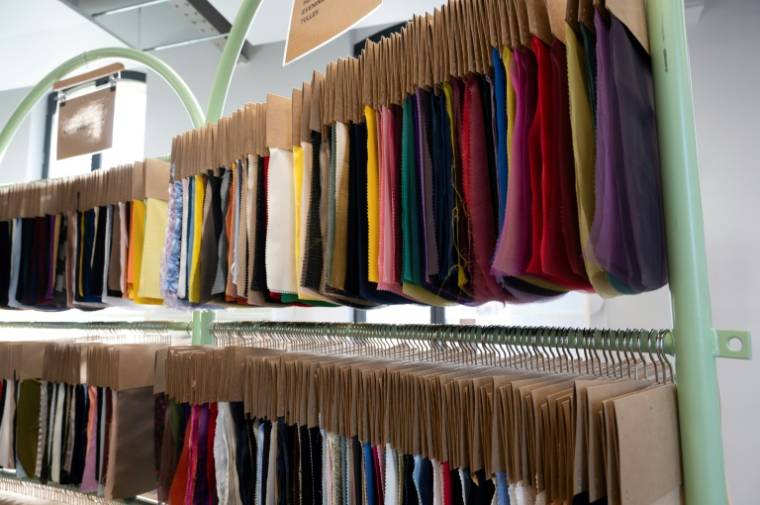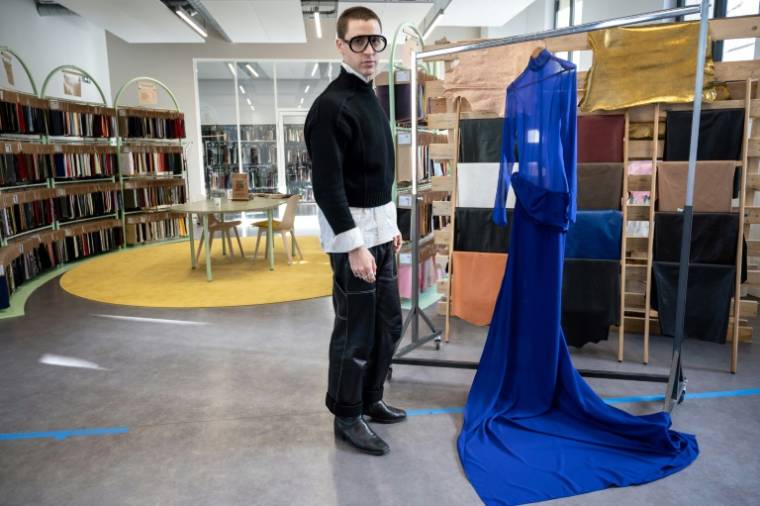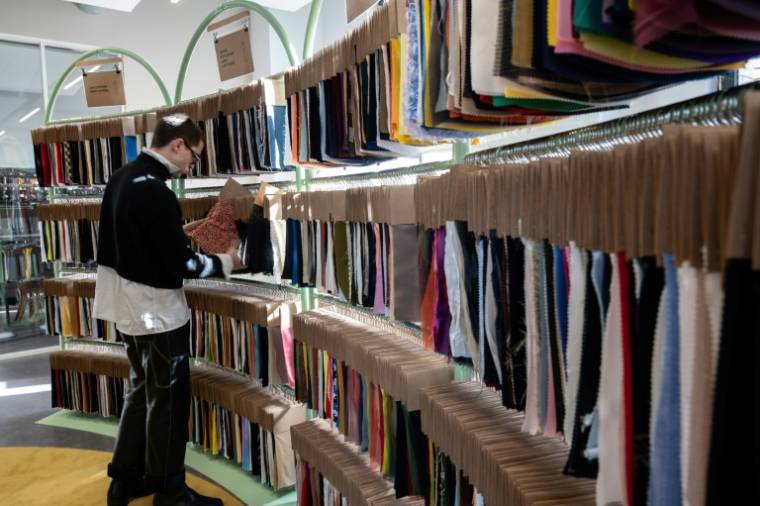Romain Brabo, co-founder of Nona Source, an online platform and showroom reselling fabrics not used by the major luxury houses of the LVMH group, on March 14, 2024 in Paris (AFP / BERTRAND GUAY)
The prices are low but the fabrics remain precious: curly alpaca, macramé guipure or silk are now finding markets after not being used by the major luxury houses of the LVMH group.
From surpluses, all these scraps have been re-injected since 2021 into an unprecedented and hitherto taboo secondary market, while the sector is being pressured by the authorities to adopt more virtuous behavior from an environmental point of view.
Before the launch of Nona Source, both an online platform and two showrooms in Paris and London, these kilometers of surplus textiles either went to the incinerator or gathered dust in warehouses.
One of the three initiators of the project, Romain Brabo, quickly saw the commercial opportunity and the environmental gesture.
“I realized that there were what we like to call ‘sleeping beauties’ in the warehouses, so magnificent fabrics which lie dormant for several years at the end of the collections and which were no longer used,” he told AFP.

Fabrics not used by the major luxury houses of the LVMH group exhibited at the Nona Source showroom, March 14, 2024 in Paris (AFP / BERTRAND GUAY)
A boon for young designers and fashion school students, limited by the exorbitant cost of these rolls of fabric essential to creation.
Nona Source sold nearly 280 kilometers of fabrics last year, practically the equivalent of the distance between Paris and Brussels as the crow flies, and almost 140,000 items of clothing.
– Fabric library –

Spanish designer Arturo Obegero in the Nona Source showroom where fabrics not used by the major luxury houses of the LVMH group are resold, on March 14, 2024 in Paris (AFP / BERTRAND GUAY)
Among the regulars: Arturo Obegero, a 31-year-old Spanish designer, who only works with these “dead stocks” and who doesn’t understand any other way of creating, he who grew up by the sea and learned in his small town of Tapia to “respect nature”.
The sustainable and luxury label of Nona Source fabrics has allowed it to gain some customers. In his micro-workshop set up at his home, for example, he created the black Spanish lace style dress worn by popstar Beyoncé for her Renaissance tour.
“People are paying more attention to the origin of what they buy, but offering them something sustainable, at a reasonable price, is becoming really complicated,” he adds.

Spanish designer Arturo Obegero looks at fabrics not used by the major luxury houses of the LVMH group, resold in the Nona Source showroom, March 14, 2024 in Paris (AFP / BERTRAND GUAY)
Pressure from public authorities, particularly from Brussels, is beginning to increase on the fashion industry, called upon to put an end to the incredible mountains of waste it produces.
Logically, initiatives similar to those of Nona Source are spreading in France and abroad.
In Paris, the highly anticipated sale of the “Tissuthèque”, specializing in Haute-Couture surplus, will take place from June 14 to 17.
– Greenwashing –
For Hélène Valade, Environmental Development Director of the LVMH group, the priority is to “evolve the codes of what is beautiful” or at least to support, perhaps with a delay, these new uses.

Hélène Valade, Environmental Development Director of the LVMH group, December 14, 2023 in Paris (AFP / EMMANUEL DUNAND)
“Ten years ago, when we wore a recycled piece, everyone found it ugly. But now, it’s not the same,” she emphasizes.
For some observers of the ecological transition, LVMH’s initiative is positive but they warn of a textbook case of “greenwashing” or eco-laundering.
The fashion giants, closely scrutinized, have no other choice but to take the plunge, thus promising to move to transport by boat, to better management of water consumption in the manufacturing phase or even to vegan leather.
“As long as they do not remove plastic PVC from their production lines, in particular at Louis Vuitton, they will never be able to claim to be a green company,” Dana Thomas, author of “Fashionopolis”, an investigation, told AFP. on the environmental impact of fashion.
Louis Vuitton, the most profitable luxury brand in the world, manufactures its famous LV screen-printed accessories not in leather but in… PVC-coated canvas, otherwise luxury waxed canvas.
Dana Thomas positively welcomes the initiative of a luxury and second-hand haberdashery by LVMH but also wonders “why didn’t they do it 20 years ago?”.
